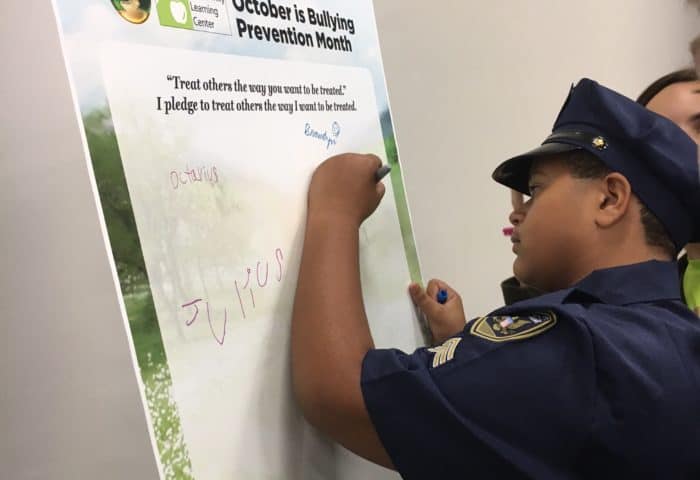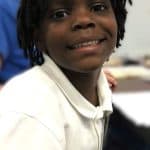In honor of Bullying Prevention Month, the students of Community Learning Center signed a pledge to not bully and to Treat Others The Way They Want To Be Treated!
Educational
CLC Academy has doubled in size!
 Our private school is hopping with new students! Since August, we have doubled in size and we plan to triple the number of students by the new school year. We are servicing Kindergarten through 5th grade and our kids are primarily receiving scholarships through the Step Up for Students program. This program is proving very successful, as many of our students were previously attending public schools and were struggling to stay on track. These same students are now being instructed at their appropriate academic level, using effective curriculum, and are moving to the top of their class.
Our private school is hopping with new students! Since August, we have doubled in size and we plan to triple the number of students by the new school year. We are servicing Kindergarten through 5th grade and our kids are primarily receiving scholarships through the Step Up for Students program. This program is proving very successful, as many of our students were previously attending public schools and were struggling to stay on track. These same students are now being instructed at their appropriate academic level, using effective curriculum, and are moving to the top of their class.
“The Community Learning Center Academy is the most wonderful school! I have seen a big difference in D’s school work and attitude since he has started. The teachers here are great and so patient. Something you don’t see very often in public school. They have one-on-one teaching here and it’s wonderful. The environment is warm and inviting. My son is so happy here. He wakes up each morning eager and ready.” S.O. (parent)
 “I have been learning to read better and I am spelling better now. I like learning about explosions -like how they take down a building when they are getting ready to build another new building there. I like learning about volcanoes. Eruptions are cool! I like all the kids here! They are all my friends. I like going outside after lunch to play with them. That’s my favorite. We push each other around in the car, too.” M.C. (2nd grade student)
“I have been learning to read better and I am spelling better now. I like learning about explosions -like how they take down a building when they are getting ready to build another new building there. I like learning about volcanoes. Eruptions are cool! I like all the kids here! They are all my friends. I like going outside after lunch to play with them. That’s my favorite. We push each other around in the car, too.” M.C. (2nd grade student)
“I love school! I love Ms. Joanie and Ms. Erika! I have fun driving the play car. I know my ABC’s now. I like that Alex gives me blueberries when I do my work. I like the kids and I like doing numbers. I know the days of the week and my birthday.” J.K. (Kindergarten student)
Enrollment is now open for renewing families who are receiving Step Up for Students scholarship funding. Go to www.stepupforstudents.org under the For Parents -Income-based Scholarship tabs for more information on how the scholarship works and to apply for the 2017-2018 school year. If you need help filling out the application, please call us at (727) 441-4444.
The Teacher Who Couldn’t Read
 John Corcoran thought that he would never learn how to read; that something was wrong with him. He was 48 years old before he discovered that something is wrong with the system – the school system.
John Corcoran thought that he would never learn how to read; that something was wrong with him. He was 48 years old before he discovered that something is wrong with the system – the school system.
John Corcoran spoke at the Florida Literacy Coalition conference on May 4th. This coalition is made up of volunteers and professionals who teach adults how to read. One in six adults cannot read above a 4th grade level; a high percentage of those cannot read above a 2nd grade level.
At age 48 he sought help from a volunteer reading coach at a library. She got him tested and it turned out that he just did not know how the written language worked. “A teacher broke the code for me,” he said. And in 13 months he went from a 2nd grade reading level to a 6th grade level. He was then functionally literate. However, it took seven years for him to feel like he could really read anything he wanted to read.
John Corcoran says that his illiteracy “suspended me in childhood”. He had a bad feeling about teachers and about himself. By second grade he had been placed in the “dumb room”. The teachers of course didn’t refer to it as the dumb room, but the students did. He rebelled, got in fights, and was a troublemaker all through elementary school.
In high school, John was an athlete, was popular and dated the valedictorian who did his homework. He stopped being a “cut-up” and became a “kiss-up”. He graduated from high school with a 2nd grade reading level and an athletic scholarship.
Community Learning Center and We Believe in Me
 Back in the spring of 2015, Community Learning Center (CLC) began working with the We Believe in Me Foundation (WBIM) to help talented young athletes who did not have the academic scores necessary for admission to college. Brenda McCarthy and Jerry Wunsch, co-founders of We Believe in Me, have been working with CLC staff to get students qualified. Jerry was an offensive lineman for 9 seasons in the NFL with the Tampa Bay Bucs and the Seattle Seahawks.
Back in the spring of 2015, Community Learning Center (CLC) began working with the We Believe in Me Foundation (WBIM) to help talented young athletes who did not have the academic scores necessary for admission to college. Brenda McCarthy and Jerry Wunsch, co-founders of We Believe in Me, have been working with CLC staff to get students qualified. Jerry was an offensive lineman for 9 seasons in the NFL with the Tampa Bay Bucs and the Seattle Seahawks.
Our Community Learning Center and We Believe in Me athletes have been working hard to improve their skills, and therefore their grades. Here is a success from of one of our student athletes:
What’s Wrong with this Picture?
 Written by: Holly Haggerty, Executive Director
Written by: Holly Haggerty, Executive Director
In my last post I discussed the phenomenon of pile on—asking kids to do work that is above their instructional and developmental level.
This phenomenon occurs right away in kindergarten where kids are expected to learn how to write lists, narratives, information, and opinion pieces before learning to print the letters. Pinellas County Schools recommends that teachers provide handwriting instruction only twice a week for five minutes.
The fact is, it is expected that at the end of the year kindergarteners will produce narratives in barely legible scrawl.
It has been that way for many years. We see the results of this practice at our Center—middle and high school students whose handwriting is barely legible. Many of these same students hate writing—perhaps because writing was difficult for them right from the start, having been asked to write full texts prior to mastering the letters.
In the Next Generation Sunshine State Standards, the previous set of Florida standards, kindergarteners were expected to learn the following writing process:
1. Pre-writing
2. Drafting
3. Revising
4. Editing
5. Producing a finished piece of writing 1
The same standards said that by the end of kindergarten students will “print many of the upper and lower case letters and recognize the difference between the two.”
In the new set of standards, LAFS (Language Arts Florida Standards), the following benchmark is given for the end of kindergarten: “Use a combination of drawing, dictating, and writing to compose opinion pieces in which they tell a reader the topic or the name of the book they are writing about and state an opinion or preference about the topic or book (e.g., My favorite book is…).”
Again the standards say that the student will “Print many upper- and lowercase letters.” 2
Do you know more than a kindergartener is supposed to know?
Written by: Holly Haggerty, Executive Director
Which one of these would you expect a kindergartener to do on their first day of school?
A. Write a Story
B. Learn the names of the letters
C. Write a sentence
If you chose B (learn the names of the letters) you would be wrong. On my daughter Dagny’s first day of kindergarten, she was asked to do C–write a sentence.
When I enrolled Dagny in kindergarten this year, it was not without some amount of trepidation. My older three children had attended private school throughout their elementary years and came out with their basics fully in.
But my husband and I decided to enroll our fourth child in a public charter school which emphasizes the arts. The school is also one of the top schools in the county for students performing at grade level.
We felt that if any child could succeed in public school it was Dagny. After all, I had practically been preparing her for school since she was born.
I was not prepared, however, for the curriculum changes prompted by Florida’s new standards.
Resolve to help even more in 2015!
 I am really proud of everything the Community Learning Center has accomplished over the past 16 years—first and foremost, the educational help we have provided to thousands of struggling kids across Florida.
I am really proud of everything the Community Learning Center has accomplished over the past 16 years—first and foremost, the educational help we have provided to thousands of struggling kids across Florida.
In 2015 however, we want to take our help to the next level. For years, we have been helping parents by providing them with tips and tools they can use to help their own kids. This year we plan to make these tips and tools more easily available by publishing on our blog. Additionally, we will discuss what we observe is being done well in schools along with what is not. Because we help kids from all over the county, we have a pretty good perspective on what is happening or isn’t.
The fact of the matter is this: in spite of the huge number of wonderful teachers, administrators, caring parents, active community groups and smart kids we have in Pinellas and Florida, something is wrong—very wrong. Nearly 30% of Florida students drop out of school 1 and here in Pinellas 45% third graders read below grade level.2
What are little boys made of?
 Written by: Sharon Hillestad, Director of Tutoring
Written by: Sharon Hillestad, Director of Tutoring
What are little boys made of? Snips and snails and puppy dog tails. That’s what little boys are made of. What are little girls made of? Sugar and spice and everything nice. That’s what little girls are made of.
This charming little ditty introduces an alarming report: Why Are We Losing Our Boys? It appears that boys are having significantly less success in school than girls. Girls usually can handle little or no physical activity, early literacy instruction, and zero tolerance (discipline) policies better than boys.
The report is copyrighted by the Pinellas Education Foundation which was founded in 1986 and has raised more than $110 million dollars to support the students and teachers of Pinellas County Schools.
Boys are suffering, be they rich, poor, white, black, Asian, or Hispanic.
The sons of college-educated parents suffer. Almost 25% of high school graduate sons of white, college educated parents have “below basic” reading levels compared to 7% of the girls. This means that almost one in four boys who have college educated parents cannot read a newspaper with understanding and will not make it in college.
Why Johnny Can’t Read–a Book that Started a War
 Why Johnny Can’t Read–a Book that Started a War
Why Johnny Can’t Read–a Book that Started a War
Written by Sharon Hillestad, Director of Tutoring
Dr. William Gray, editor of the Dick and Jane reading books for elementary children, successfully squashed the teaching of phonics and the first scientific reading program, Let’s Read, in the 1940s (see previous blog post). The debate on what was the best way to teach reading moved out of academia and into the public arena because of Dr. Rudolf Flesch, a scholar, professor, and grandfather.
Rudolph Flesch knew that several children, including his own grandson, were having trouble learning to read. By interviewing teachers, visiting colleges and researching curriculum, he discovered the cause of reading difficulties. Colleges were training novice teachers not to teach phonics; experienced classroom teachers were being pressured to abandon teaching phonics; phonic curriculum was no longer available to teachers.
In 1955 he wrote a book, Why Johnny Can’t Read. In it, he described how children were being taught to memorize words. Teachers were not skilled in teaching students to sound out words and that this was causing a decline of literacy. Why Johnny Can’t Read was a best-selling book. The author received letters from teachers all over the country confirming his assertion that teachers could no longer teach all children to read.
How Dr. William Gray Ruined Reading Instruction
 An excerpt from the book The Reading War
An excerpt from the book The Reading War
Written by Sharon Hillestad, Director of Tutoring
There happened an event that had a devastating impact on our nation. It was not loud and bloody; it was quiet and covert. This is a true story:
In the 1920’s, a boy was about to fail first grade. He felt stupid and didn’t want to read, because he couldn’t. His father was Leonard Bloomfield, a famous linguist, an expert on languages. Dr. Bloomfield decided to help his son learn how to read by creating 72 lists of words based on their structure (phonics).
Dr. Bloomfield created word lists starting with CAT, HAT, RAT, etc and gradually his boy was able to read and spell words like PICTURE, LECTURE, CREATURE, ADVENTURE, and FURNITURE. After a while, he could read thousands of words and he loved reading books, because he could.
Dr. Bloomfield was overjoyed at the success of the reading lessons and gave the word lists to his old friend, Clarence Barnhart, who wrote and published dictionaries. Mr. Barnhart taught his son to read using the word lists. Then other New York families successfully taught their children from the lists of words based on the phonetic structure of words.
Mr. Barnhart and Dr. Bloomfield wanted to make the process of teaching reading easier for all teachers. They tried to get the colleges to show the word lists to students training to be teachers, but no college would do so.








Recent Comments